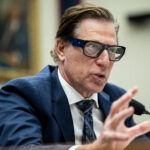The Federal Aviation Administration (FAA) is establishing a broad-based advisory committee to provide advice on key unmanned aircraft integration issues.
Also, under a new policy, the agency will also make it easier for students to fly unmanned aircraft as part of their coursework.
The drone advisory committee will include representatives from industry, government, academia, retail and technology fields, FAA Administrator Michael Huerta told last week’s convention of the Association for Unmanned Vehicle Systems International (AUVSI), which represents the drone industry.
Intel CEO Brian Krzanich has been asked to chair the group.
Huerta said the drone advisory committee is an outgrowth of the previous unmanned aerial systems (UAS) registration task force and the rulemaking committee. Those panels were set up for a single purpose and for limited duration. In contrast, Huerta said the drone advisory committee is intended to be a long-term group.
“Input from stakeholders is critical to our ability to achieve that perfect balance between integration and safety,” Huerta said. “We know that our policies and overall regulation of this segment of aviation will be more successful if we have the backing of a strong, diverse coalition.”
Huerta also announced the FAA has begun allowing students to operate UAS for educational and research purposes. As a result, schools and students will no longer need a Section 333 exemption or any other authorization to fly provided they follow the rules for model aircraft. Faculty will be able to use drones in connection with helping students with their courses.
“Schools and universities are incubators for tomorrow’s great ideas, and we think this is going to be a significant shot in the arm for innovation,” Huerta said.
Brian Wynne, president and CEO of AUVSI, welcomed Huerta’s announcements. He called the advisory committee “yet another example of government and industry collaboration AUVSI has been advocating, and we look forward to participating in the process.”
He also praised the plan to make it easier for students and teachers to engage in unmanned aircraft research as a way to “inspire the next generation” of drone operators and aviators.
However, at the same convention, a keynote speaker, former Cisco CEO John Chambers, criticized Huerta and the Obama administration for moving too slowly on federal regulations for drones. He argued that the U.S. is in danger of losing out on a market that could, he claimed, mean trillions of dollars to the U.S. economy.
Chambers himself has invested in and is on the board of on a commercial drone startup called Airware. The firm has raised $30 million, according to Crunchbase.
Airline pilots and air traffic controllers have warned that safety concerns are real. They have reported increased incidents of drones in airspaces around airports and urged that regulators restrict drones around airports including using technology such as geospacing that would cause drones that get too close to protected airspace to crash.
Some insurance companies are proceeding cautiously into the drone market given the uncertainty over the regulations and the risks they represent for owners and operators.
The FAA has promised to announce final rules soon. “The rule will be in place within a year,” FAA Deputy Administrator Michael Whitaker said last year in testimony before the U.S. House of Representatives Oversight and Government Reform Committee. “Hopefully before June 17, 2016,” he added.
Related:
- Law Enforcement, Private Firms Look to Evolving Drone Defense Industry for Protection
- Pilots: Don’t Underestimate Safety Threat Posed by Drones
- Large Insurers Eager But Cautious About Drone Insurance Market
Topics USA Legislation Aviation Training Development Aerospace
Was this article valuable?
Here are more articles you may enjoy.


 Kentucky Scrapyard Workers Describe UPS Plane Crash That Destroyed Their Business
Kentucky Scrapyard Workers Describe UPS Plane Crash That Destroyed Their Business  Estimate to Rebuild Baltimore’s Key Bridge Doubles to $5 Billion
Estimate to Rebuild Baltimore’s Key Bridge Doubles to $5 Billion  FEMA Chief Resigns After Six Months, Criticism Over Floods
FEMA Chief Resigns After Six Months, Criticism Over Floods  AM Best Downgrades State Farm Mutual Auto
AM Best Downgrades State Farm Mutual Auto 

